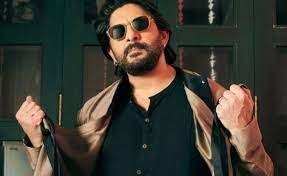Bollywood’s Dance Spectacular: Arshad Warsi’s Unexpected Role
In the world of Bollywood, where stars shine brilliantly and directors have great influence, the unsung heroes who labor behind the scenes seldom get the recognition they deserve. Arshad Warsi, who is most known for his acting prowess and spot-on comedic timing, has also worked as a choreographer in the past. The title song from the 1993 film “Roop Ki Rani Choron Ka Raja” is a beautiful visual feast, most of which can be credited to Arshad Warsi. This article explores the fascinating story of how Arshad Warsi choreographed this well-known song, displaying his aptitude and adaptability outside of acting.
Before we start Arshad Warsi’s career as a choreographer, set the scene by understanding the setting of the movie and the song itself. The 1993 Bollywood film “Roop Ki Rani Choron Ka Raja” was produced by Boney Kapoor and directed by Satish Kaushik. Alongside Sridevi and Anil Kapoor, who portrayed Raja and Roopa, Anupam Kher and Jackie Shroff performed supporting parts.
Although the film had expensive sets, opulent costumes, and an all-star ensemble, it also faced its fair share of challenges and controversy throughout production. The movie’s title song, “Roop Ki Rani Choron Ka Raja,” came to symbolize the grandeur and ambition of the specific production. To bring this larger-than-life song to life, the filmmakers hired Arshad Warsi, a young and completely unknown dancer and choreographer.
Before moving into choreography, Arshad Warsi was well known for his theatrical performances as a dancer. Several Bollywood movies included him as a background dancer, while “Roop Ki Rani Choron Ka Raja” itself featured him briefly. His innate aptitude to dance, however, caught the attention of the film’s production crew.
When the intended choreographer for the movie’s theme song resigned owing to artistic differences, Arshad Warsi was handed an unexpected chance. Warsi agreed to the task because he loves to dance and wants to achieve despite having no prior experience directing a high-budget motion picture.
It’s not simple to choreograph a song for a Bollywood film. Planning choreography that properly complements the music requires not just careful consideration of the music, but also of the director’s aesthetic vision, the acting prowess of the actors, and the general storyline of the film. Arshad Warsi had a difficult task ahead of him when he took on the choreography for the song’s title.
The song included multiple backup dancers and complicated dance movements in a spectacular and elaborate presentation. Warsi’s choreography mixed contemporary dance with elements of Indian classical dance as well as some avant-garde techniques. Each gesture and movement was meticulously thought out, and he made sure they would add to the grandness of the film.
One of the song’s most memorable elements is the use of mirrors and reflections in the dancing. Warsi skillfully combined the many mirrors included in the song’s stage design into the dancing motion. This improved the song’s aesthetic appeal and made it even more distinctive.
A song of this length’s choreography brought its own set of challenges. Arshad Warsi had to work with a variety of dancers, some of whom were well-known professionals and others of whom were less experienced performers. He had to blend his personal aesthetic integrity with the creative contribution of the director and the performers.
One of the most challenging challenges was coordinating the motions of a big ensemble cast. Throughout the song, Anil Kapoor, Sridevi, and a large group of backup dancers had to coordinate their movements flawlessly. Warsi overcome this challenge largely as a result of his thorough preparation and ability to articulate his ideas clearly.
Even if “Roop Ki Rani Choron Ka Raja” may not have achieved the box office success it hoped for, the title song choreographed by Arshad Warsi is nonetheless a timeless piece of Bollywood history. The song, a genuine cinematic masterpiece, is notable for its breathtaking graphics, captivating dancing motions, and inventive use of mirrors.
The contribution of Arshad Warsi to the song’s popularity cannot be overstated. He stepped outside of his comfort zone, took on the challenging role of choreographer, and created a piece of art that had a significant impact. It displayed his passion of dancing as well as his aptitude for picking up new jobs in the industry.
Arshad Warsi has a distinguished acting career and a great sense of humor. However, his work on the title song for “Roop Ki Rani Choron Ka Raja” shows a distinct side to his skill. Warsi’s creative choreography brought the song to life and transformed it into a magnificent performance that Bollywood fans continue to admire.
“Roop Ki Rani Choron Ka Raja” may not have found the monetary success it sought, but it accomplished something far more significant: it showed Arshad Warsi’s brilliance and adaptability in a number of contexts. The choreography of this well-known song by Arshad Warsi is a perfect illustration of how the best contributions to film may sometimes come from unexpected sources.







